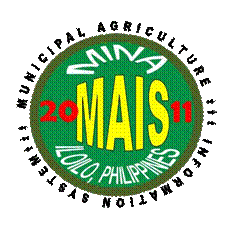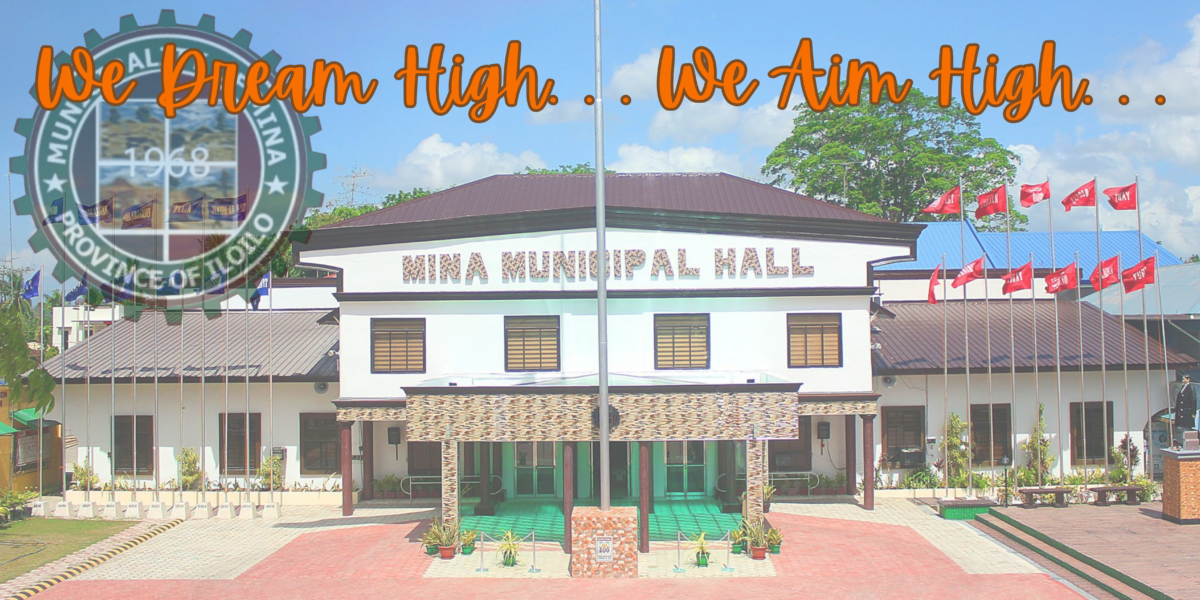
This is an information technology-based master program for Integrated, Mass Contiguous and Synchronized Agriculture Production and Marketing Linkages created in the Municipality of Mina that aims to:
- Provide food for every Filipino family;
- Alleviate Poverty;
- Support to small to large scale farming from the grassroots level for massive and workable production
- Cultivate idle and vacant lots and make use of farm lots in between main crop seasons;
- Maximize government programs for agriculture economic development to reach the grassroots.
- Encourage participation of MSME –Micro Small Medium Enterprise, Cooperatives, etc.
- Promote collaboration of government agencies, thus creating sustainable implementation of the economic programs.
- Help farmers to become entrepreneurs
- Increase exportation and eventually eradicate importation of agricultural goods.
- Enable more people to become economically sufficient
- Be able to face the challenges of ASEAN integration in Agriculture Development.
The program is based on an interactive computer software developed by the LGU of Mina, Iloilo which collect, sort, evaluate and utilize agricultural data on farmers, their family, their activities, land, crop and livestock production in real time. The data is sorted, evaluated and projected as needed to provide information to decision makers, market players and other key government and private sector interest groups.
Data is gathered by barangay (village) level volunteers and relayed by SMS or stored in flash drives and are received at the municipal level and entered into the central data bank where they are digitally collated, sorted and analyzed. Reports can be instantly generated and information can be derived therefrom. Accurate information on any commodity produced in the municipality of Mina are inputs to helping farmers market their products outside, giving them assurance on better prices and volumes they can sell which directly redound to improved and stable income for them.
For example, rice as a commodity can be effectively managed in the municipality. Information for decision-makers can include the volume of production, type (like black, red or conventional or organic), the farmers producing them, farm size (or total area), period of availability or where stored, etc. When a market is developed, the LGU through the Municipal Agriculture Office can negotiate with the market as to price, volume, quality and period of delivery for the rice products of the farmers. The same arrangements can be made for the other commodities produced in the municipality.
Agriculture development in the municipality can also be sped up because the software can identify the gaps such as the need for improved technology for growing crops which can be addressed by training, infusion of new seeds and inputs, etc. New crops can also be tried when there is a market demand identified. Idle lands are identified and the LGU together with the barangay leaders can negotiate with owners for a beneficial sharing or utilization system that will turn these idle lands productive.
Scaling up the program to district, provincial and national levels will improve national productivity and realize the long term plan to become competitive against other countries in the environment of free trade. General Agreement on Tariffs and Trade (GATT), an agreement entered into by the country will come into full effect in the next two years. By then, free trade means the entry of commodities without any protection for the local products. However with a program like the MAIS, stocks or inventory of food and other commodities can be managed more efficiently, making decisions for importation more rational.
This information and technology-powered farming programs can also provide real-time data and information on the status of agricultural production across the country. The system can promote efficient information exchange to ensure production based on analysis of local supply and market demand. Ultimately, this could minimize wastage of produce or need to import agricultural products. Benefits include increased farm output of specific commodities based on market demand, and long -term food security and sustainable agriculture.
The information system is installed at the Agriculture Office of the LGU. This office shall manage the system and ensure regular exchanges with client farmers/producers and the market players in updating its database.
There are two versions of the system. The first system is: Visual Basic which contains farmer’s demography e.g. bio data, farm location, and production, type of farming applied, government assistance through farm inputs, seminars and training attended among others. Data that should not be available for global use, intended for concerned LGUs only.
Another system used is the upgraded web version (under construction) using cross platform devices such as desktops, laptops, mobiles, tablets among others. This upgraded web-based system still needs to be fully operationalized in Mina.
Interaction with the market will maximize production, since production will be based on market demand. MAIS has helped our small-scale farmers through collaboration and synchronized planting to produce quality big volume products to meet clients’ demand. When our ASEAN neighbors could see that we have sufficient agricultural products, that we have more than enough to supply our people, I believe they would think twice before exporting their goods here.
Information update is done in real time. Volunteers regularly submit reports on the status of crops in their respective communities which are submitted immediately to the Municipal Agriculture Office for sorting and use. Updated information regarding the current agriculture products can be determined real time and instantly utilized especially for market linkage. With updated information as to availability of supply, and viable products that can be produced, insufficiency can readily be addressed thus need to import food supply is now unnecessary. This could really help alleviate poverty, provide food for the table, help small scale farmers and a lot more.
With this plan, we are confident that any small municipality can survive and grow in the arena that is free trade. We sincerely pray that our small effort would merit the consideration of other government agencies from the provincial, regional, and national level, that somehow them and other group of technocrats will be able to help us realize our dream for a more progressive municipality and on a larger scale, our nation, especially in the GATT environment.
